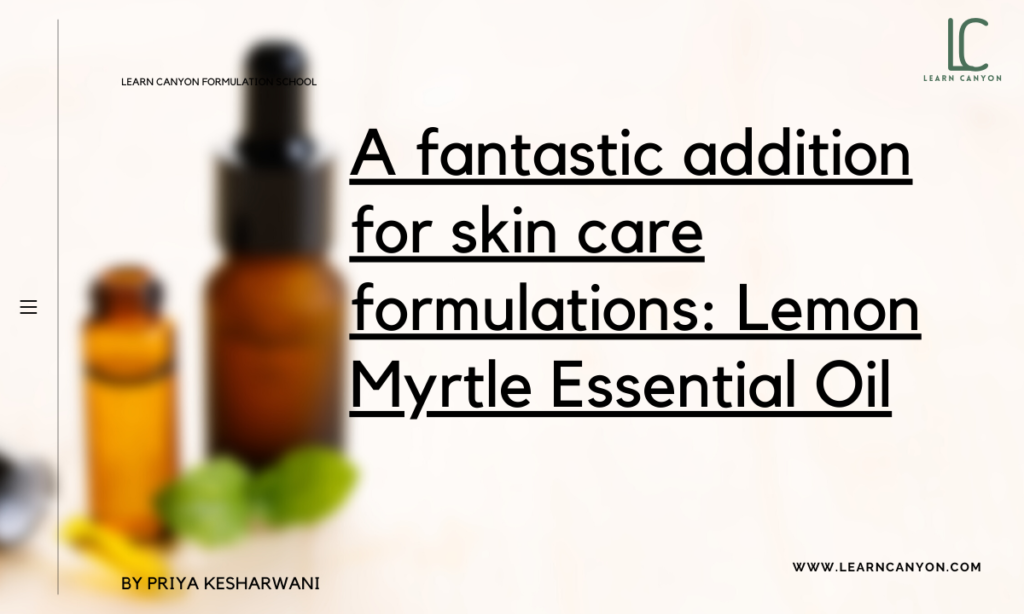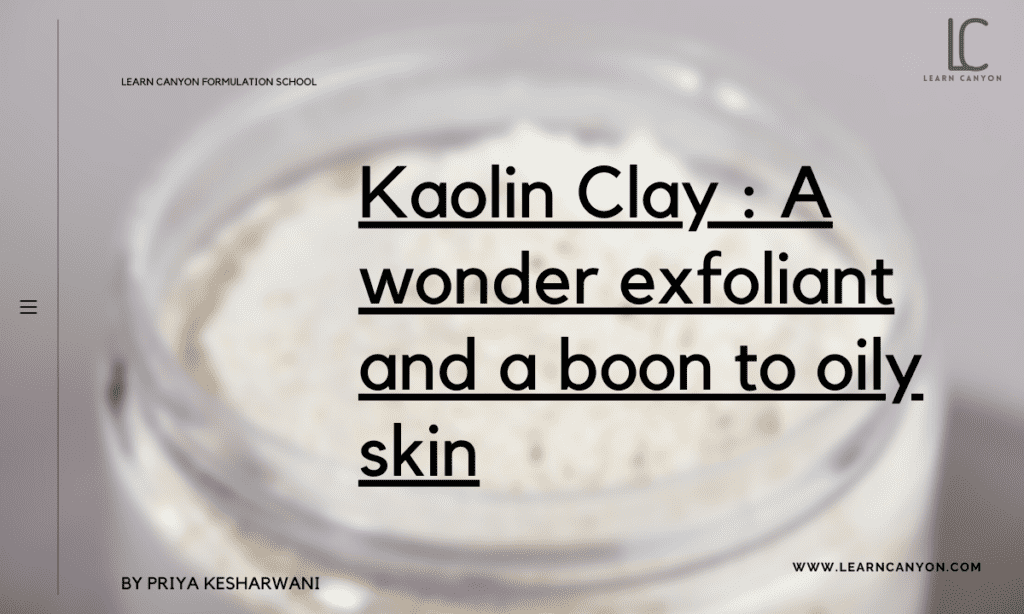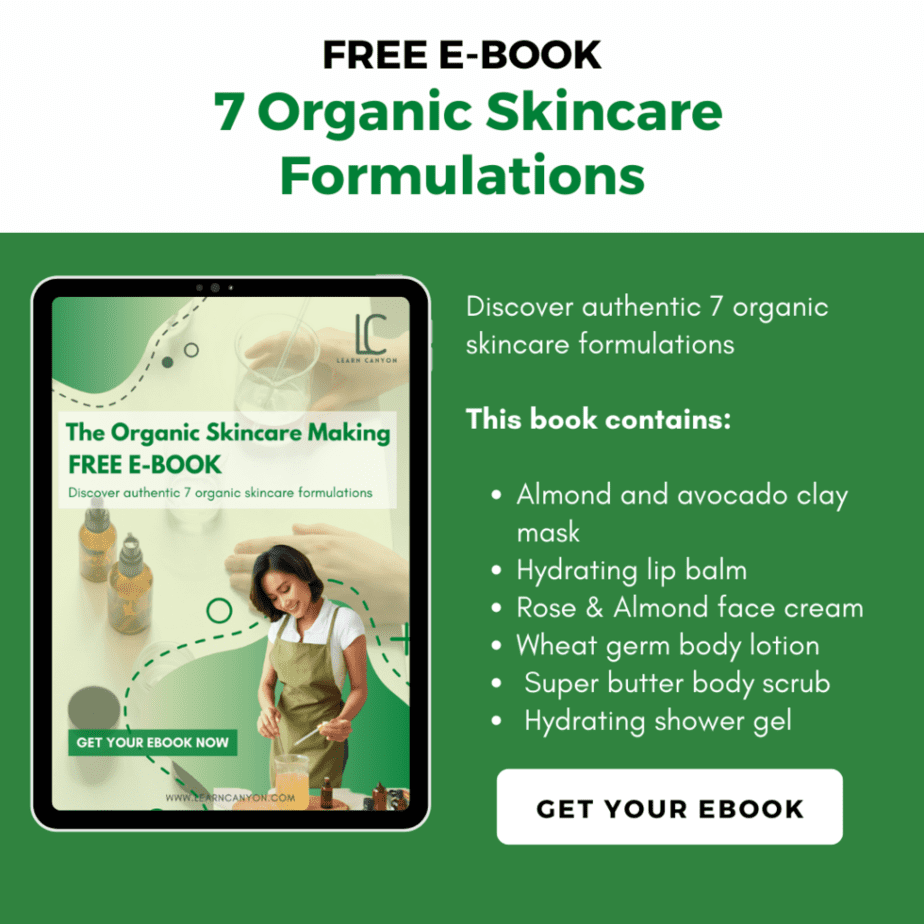
Kaolin Clay: A wonder exfoliant to oily skin

Kaolin Clay
Remember shaping soft blocks of clay for a pottery lesson as a kid, or sculpting bars of modelling clay as a student?
The soft, buttery texture felt wonderful on your hands, and depending on the type, it may have even made them smoother. Of course, we’re talking about kaolin clay, the class’s most popular student.
You’ve probably heard of bentonite clay if you’re a lover of face masks. However, there is another clay, kaolin clay, that is extremely soft, effective, and has a number of beauty-enhancing properties. Let’s talk about it.
What is Kaolin Clay?
The terms “white clay,” “China clay,” and “kaolinite” all refer to the same clay. Kaolin clay has been used to manufacture china and porcelain for centuries.
It was mined for hundreds of years on the Kao-ling hill in China, which gave it its name.
This soft, natural clay is usually found in powder form in nature, but those brilliant white-coated scientists can create a synthetic version in the lab. The versatility of kaolin clay is remarkable; it’s been used to make rubber, paint, paper, cosmetics, medications, and much more.
Kaolin is known for its absorbency and texture in the skincare sector. If you’ve ever used a clay mask, there’s a good chance it included kaolin clay.
This is due to the fact that it is buttery soft on the skin and works effectively as a moisturiser.
| What is it? | Kaolin clay is a fine, smooth clay that is available in a wide spectrum of colours (white, red, green, pink, yellow, and orange). |
|---|---|
| INCI | Kaolin |
| Appearance | A light, fluffy, fine powder. |
| Texture | When mixed with water, it becomes smooth and creamy. When dry, it's light and silky. |
| Recommended Usage | 1-60% |
| Solubility | Insoluble |
| Melting point | 1785 deg C |
| Boiling point | NA |
| pH | 6 |
| Aroma | A bit dusty, Nothing terribly noticeable. |
| Why do we include it in formulations? | It's an excellent all-around clay with inherent absorbency. |
| How to work with it? | Because kaolin is a fine powder, it should be added to the water phase of the formulation. |
| Applications | "Kaolin absorbs sebum and helps to keep pores clear." Excess oil, debris, and pollution are removed from the skin without creating irritation or redness. |
| Absorption rate | Fast |
| Strength | Kaolin is a superb all-around clay that is incredibly adaptable. |
| Weaknesses | White kaolin clay is insufficient for highly oily skin. |
| Substitution | French clays, zeolite |
| How to store it? | Stored in a cool, dark and dry place. |
| Shelf life | The shelf life of kaolin is unlimited. |
Fun Fact
| Type of ingredient | Absorbent, drying agent |
|---|---|
| Main benefits | Binds sebum, absorbs excess oil, mattifies, and attracts pollutants to the surface. |
| Who should use it | Those with oily or acne-prone skin who want to manage oil and shine should use kaolin in their skincare routines, although it's suitable for most skin types. |
| How often can you use it? | Kaolin can be used as little as once a week to address an oily complexion. |
| Works well with | Other botanicals and minerals that can cure, soothe, and relax the skin can be used alongside kaolin, according to Cook-Bolden, and Hirsch recommends chamomile for its possible soothing properties. |
| Doesn't work with | Other drying agents, as well as oral drugs that may interfere with kaolin, such as digoxin, quinidine, and trimethoprim, should be avoided when using kaolin, according to Cook-Bolden. Cook-Bolden adds, "Kaolin may slow down the absorption of clindamycin." "However, there is no evidence that it reduces clindamycin absorption." |
| How to use | Added to your formula during the water phase |
Mechanisms of action
“Kaolin absorbs sebum and helps to keep pores clear.” It’s used to clean the pores of dirt and toxins. It then removes excess oil, debris, and pollution from the skin without causing irritation or redness. Kaolin clay contains minerals that can help to eliminate oil, secretions, and pollutants from the skin.
By absorbing moisture and impurities and minimising blemishes, they act as a cleansing and rejuvenating agent.
Clays are negatively charged minerals that remove impurities such as pollutants, chemicals, and microorganisms from your skin while leaving minerals behind.
Benefits of Kaolin Clay
When it comes to deeply cleansing and gentle cleansers, there are a number of really potent natural resources that offer significant advantages over more popular, chemically-enhanced cleansers. Kaolin clay is one of these all-natural components that contribute to a toxin-free, vegan face care routine; it’s also effective as a cleanser, exfoliator, blemish treatment, and more for all skin types.
Some of the most common uses for kaolin clay include the following:
- Skin is cleansed gently (excellent alternative cleanser for those with sensitive skin)
- Eliminating greasy skin
- Cleaning and detoxifying the pores by removing dirt, filth, pollution, bacteria, and other contaminants.
- Calms sensitive and easily irritated skin.
- Acne treatment that works on a weekly basis
- Exfoliating and eliminating dead skin cells, as well as flaky, dry skin
- Enhancing skin elasticity and delaying the onset of age signs
- Getting rid of bug bites, rashes, poison ivy, and other skin irritations
Side Effects of Kaolin
Despite the fact that kaolin is a usually mild chemical, it is considered a safe ingredient in personal care products. It can be somewhat drying if applied too regularly. Cook-Bolden advises against using kaolin if you have really dry skin. Using it on the skin has no known adverse effects.
How to use it in formulation?
While kaolin is one of the gentlest clays for skin, it is nonetheless a drying clay. If you have sensitive skin or live in a dry climate, try not to use it too frequently. Also, don’t forget to do a patch test! It’s best to avoid it if you’re taking any drugs or using any skin-drying chemicals.
Work well with other ingredients
According to Cook-Bolden, other botanicals and minerals that can cure, soothe, and calm the skin can be used alongside kaolin, while Hirsch suggests chamomile for its possible soothing effects.





